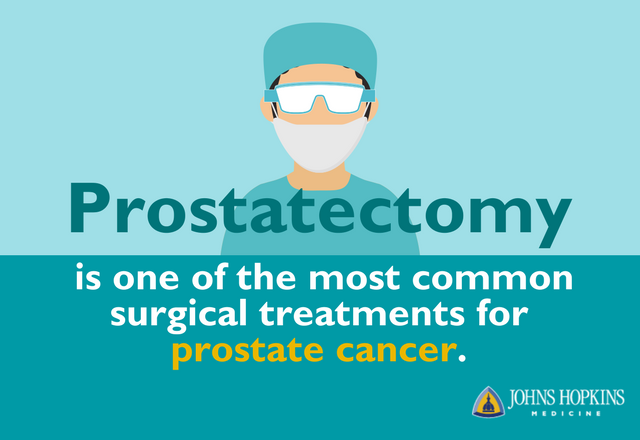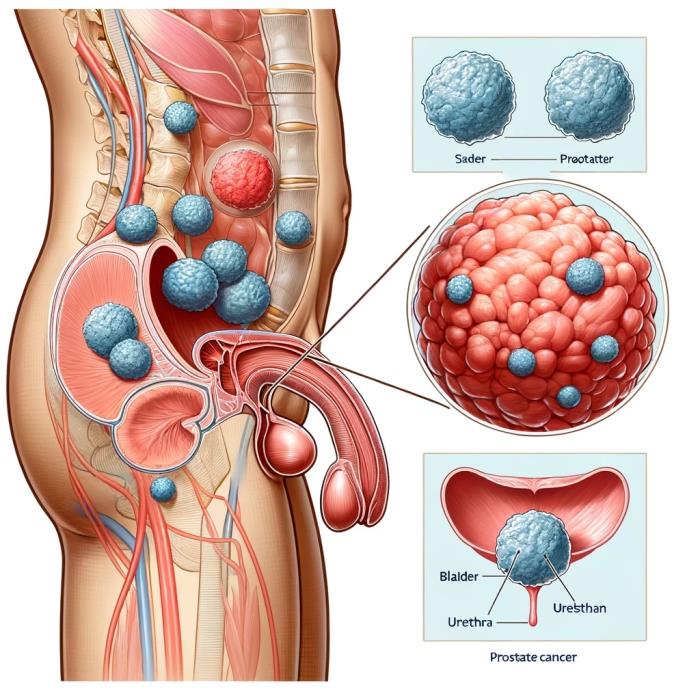Best Prostate Cancer Hospital In Mumbai Fundamentals Explained
Best Prostate Cancer Hospital In Mumbai Fundamentals Explained
Blog Article
Prostate Cancer Cells Therapy: Surgical and Non-Surgical Approaches Explained
When encountered with a prostate cancer cells diagnosis, the variety of therapy options can seem frustrating. This extensive overview aims to drop light on the intricacies of prostate cancer therapy, supplying insights into the intricacies of each technique to encourage individuals in making informed selections concerning their wellness.
Surgical Treatment Choices
When thinking about medical therapy alternatives for prostate cancer, people and healthcare suppliers typically consider the dangers and advantages connected with different treatments. This treatment is usually suggested for clients with local prostate cancer and provides the possibility for a remedy.
Another surgical option is robotic-assisted laparoscopic prostatectomy, a minimally intrusive treatment that makes use of a robot system to assist the cosmetic surgeon in removing the prostate. This technique can result in less blood loss, shorter medical facility remains, and much faster healing times contrasted to conventional open surgical procedure. However, it likewise lugs the danger of problems such as infection and injury to bordering organs.
Ultimately, the choice of medical treatment for prostate cancer depends upon different aspects including the phase of the cancer, the patient's general wellness, and their preferences pertaining to possible side effects and recuperation times. Consulting with a multidisciplinary team including urologists, oncologists, and radiation oncologists can assist clients make educated decisions regarding one of the most appropriate medical method for their specific case.

Non-Surgical Therapy Options
Thinking about alternatives to medical treatments, non-surgical therapy options for prostate cancer offer individuals added avenues for handling the condition while decreasing prospective surgical threats. One non-surgical strategy is Energetic Surveillance, where clients with low-risk prostate cancer are kept an eye on very closely via routine check-ups, blood tests, and biopsies, without undergoing immediate treatment. This technique aims to avoid unnecessary therapy and its involved side results, such as urinary incontinence and erectile dysfunction.
One more non-surgical choice is Radiation Treatment, which makes use of high-energy rays to kill cancer cells (Best prostate cancer hospital in India). This treatment can be provided externally using a maker (Exterior Beam Radiation) or internally via tiny contaminated pellets put near the tumor (Brachytherapy) Radiation therapy can be used as a key therapy or in mix with other therapies, such as hormonal agent therapy
Additionally, Hormone Treatment is a non-surgical technique that intends to decrease the levels of male hormonal agents (androgens) in the body, as these hormonal agents can fuel the development of prostate cancer cells. By obstructing or decreasing androgen degrees, hormone treatment can reduce cancer progression and relieve signs and symptoms in sophisticated cases.
Robotic-Assisted Surgery for Prostate Cancer

One of the essential benefits of robotic-assisted surgical treatment for prostate cancer cells is its capacity to reduce the threat of complications check it out and negative effects typically connected with open surgical treatment, such as blood loss, pain, infection, and extended healing times. Clients going through robotic-assisted procedures typically experience much shorter health center keeps, much less postoperative discomfort, and quicker go back to regular activities. Additionally, the minimally intrusive nature of robotic surgical procedure usually causes smaller sized lacerations, causing enhanced cosmetic outcomes and minimized scarring for patients. On the whole, robotic-assisted surgical treatment represents a sophisticated method to prostate cancer cells therapy that incorporates technical advancements with surgical proficiency to optimize person results.
Radiation Treatment for Prostate Cancer
Using sophisticated radiation innovation, radiation treatment plays a vital role in the detailed therapy of prostate cancer. Radiation treatment uses high-energy radiation to damage cancer cells and shrink growths. It is an usual treatment alternative for prostate cancer, either as a main therapy or in combination with surgical treatment, hormonal agent treatment, or radiation treatment.
There are two primary types of radiation treatment made use of for prostate cancer cells: exterior light beam radiation treatment (EBRT) and brachytherapy. These seeds emit radiation that kills the cancer cells over time.
Radiation treatment for prostate cancer cells is very effective, with high treatment rates, especially for local cancer. It is also an important alternative for people that might not appropriate prospects for surgical procedure. Like any treatment, radiation treatment may have side impacts, such as urinary system problems, fatigue, and skin irritation, but these are manageable and frequently short-term.
Hormone Treatment for Prostate Cancer Cells
Hormone treatment is a typically made use of treatment approach for prostate cancer cells administration. Hormonal agent therapy, additionally known as androgen deprivation treatment, aims to minimize testosterone levels in the body or obstruct the hormonal agent's effects on the prostate cancer cells, hence slowing down the illness's progression.
There are various kinds of hormone therapy for prostate cancer, consisting of medications that reduced testosterone levels (such as luteinizing hormone-releasing hormonal agent agonists and antagonists), or medicines that obstruct testosterone from reaching cancer cells (like anti-androgens) Hormonal agent treatment can be used alone or in mix with various other treatments like radiation therapy, depending on the stage and aggression of the cancer.
While hormone treatment can efficiently control prostate cancer cells development, it may include negative effects such as hot flashes, loss of sex drive, erectile dysfunction, and osteoporosis - Best prostate cancer doctor in Mumbai. Normal monitoring and discussions with doctor are essential to handle these negative effects and ensure the treatment's performance
Conclusion
In final thought, the therapy alternatives for prostate cancer cells consist of non-surgical and surgical techniques such as robotic-assisted surgical procedure, radiation therapy, and hormonal agent treatment. Each technique has its very own advantages and risks, and the option of treatment depends on different factors such as the stage of cancer cells and general wellness of my company the individual. It is essential for people to review these options with their healthcare supplier to figure out the most appropriate course of action for their specific situation.

Utilizing advanced radiation technology, radiation therapy plays an important duty in the thorough treatment of prostate cancer. It is an usual therapy option for prostate cancer, either as a main therapy or in mix with surgical procedure, hormone treatment, or radiation treatment.
Radiation therapy for prostate cancer cells is highly efficient, with high cure rates, specifically for localized cancer.Hormonal agent therapy is a typically utilized treatment method for prostate cancer cells monitoring.In final thought, the therapy alternatives for prostate cancer cells consist of non-surgical and surgical approaches such as robotic-assisted surgical treatment, radiation treatment, and hormonal agent therapy.
Report this page